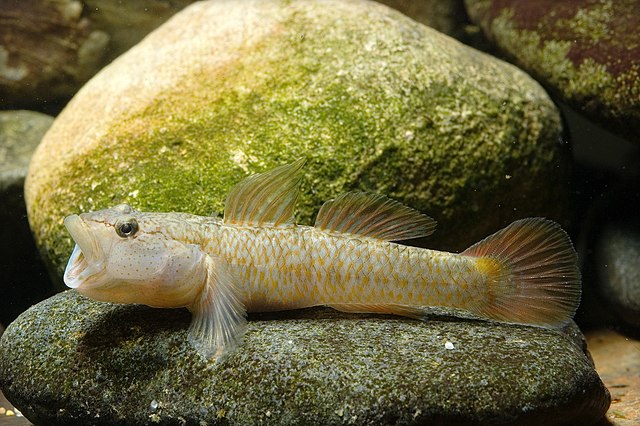Demersal fish, also known as groundfish, live and feed on or near the bottom of seas or lakes. They occupy the sea floors and lake beds, which usually consist of mud, sand, gravel or rocks. In coastal waters, they are found on or near the continental shelf, and in deep waters, they are found on or near the continental slope or along the continental rise. They are not generally found in the deepest waters, such as abyssal depths or on the abyssal plain, but they can be found around seamounts and islands. The word demersal comes from the Latin demergere, which means to sink.
Bluespotted ribbontail ray resting on the seafloor
Rhinogobius flumineus swim on the beds of rivers
Benthic flatfish and benthopelagic cod on a shore – Jan van Kessel senior, 1626–1679
Flounder have both eyes on one side of their head
The abyssal zone or abyssopelagic zone is a layer of the pelagic zone of the ocean. The word abyss comes from the Greek word ἄβυσσος (ábussos), meaning "bottomless". At depths of 4,000–6,000 m (13,000–20,000 ft), this zone remains in perpetual darkness. It covers 83% of the total area of the ocean and 60% of Earth's surface. The abyssal zone has temperatures around 2–3 °C (36–37 °F) through the large majority of its mass. The water pressure can reach up to 76 MPa.
A dense gathering of Rimicaris hybisae shrimp at the Beebe Hydrothermal Vent Field in the Mid-Cayman Rise. The shrimp are almost entirely blind, surviving at the interface of cold, deep seawater and supercritical hydrothermal fluid.





